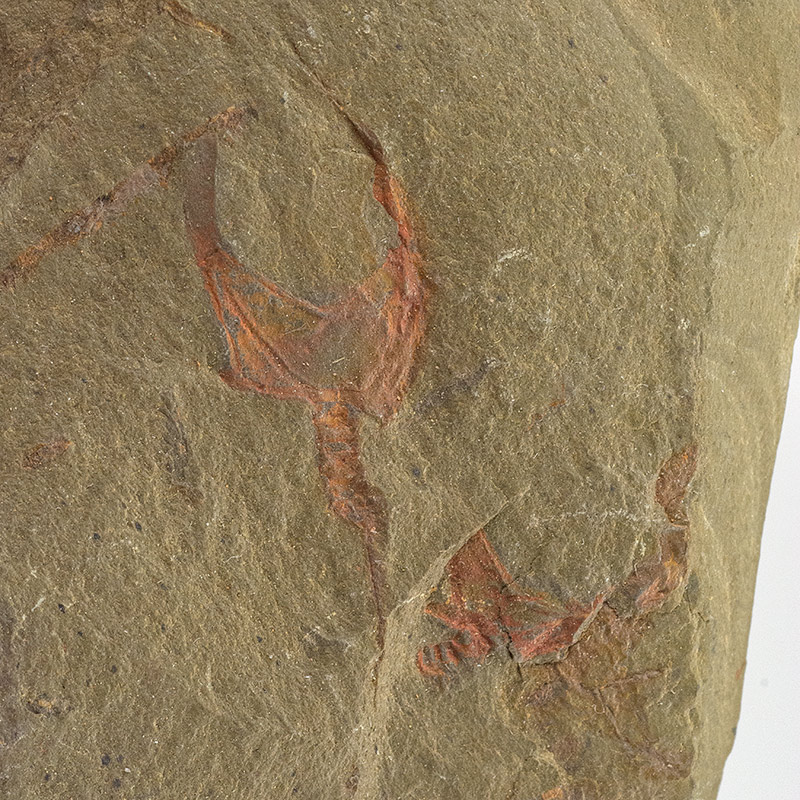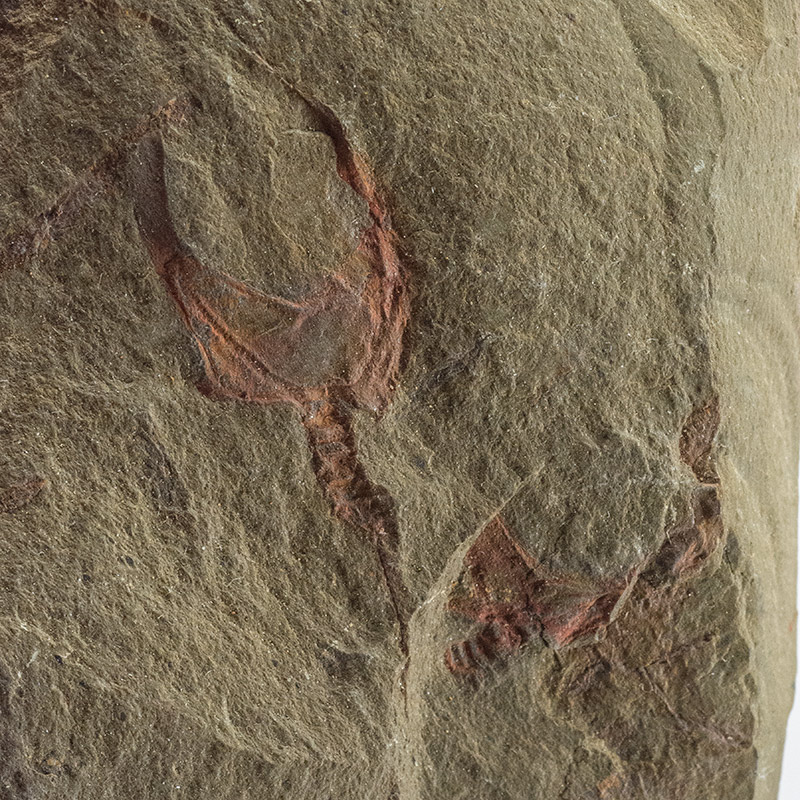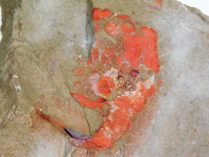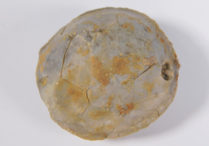Description
The body of Cothurnocystis consists of a chalice (or theca) and a stem (tail or foot).
The theca is fattened, boot-shaped and asymmetrical.
The edges of the flat sides of the theca seem to consist of 14 elements, 11 defining the outline of the theca, and 3 are processes, one forming a “toe”-spike, a second a heel-spike and a third a lip-spike.
The so-called “obverse”-side (“toe” pointing left), is covered with one thin integument, at the “reverse”-side the integument is interrupted by a “strut” formed by a branch of an element near the attachment of the stem, and a branch of an element at the top of the theca.
Approximately from the attachment of the stem to the “toe”-spike, is a structure reminiscent of a windpipe, that has been interpreted as a series of slits in the integument.
The attachment of the stem seems to consist of four sets of left and right elements, becoming narrower further from the theca.
Further down single and uniform elements of the stem seem comparable to the anatomy of sealily stems.
The “instep” of the boot seems to hold both the mouth and the anus.
Early Ordovician (Arenigian)
Upper Fezouata Formation
Zagora, Morocco
33mm cystoid with partial on 107mm slab
Cystoid







